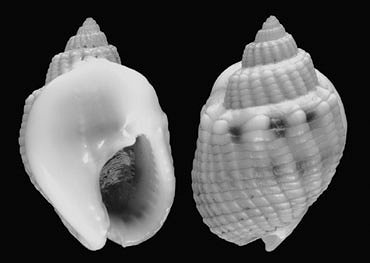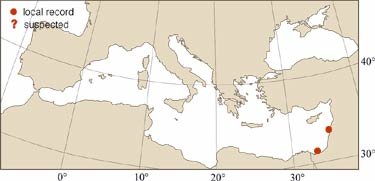
|
Relevant Synonyms
Misidentification
|
|
| photo: S. Gofas |
|
SHORT
DESCRIPTION
color :
greenish, with vague darker spiral zones, aperture and callus white.
common size :
20 mm in the Indian Ocean, 15 mm for the Mediterranean specimens. |
DISTINGUISHING CHARACTERISTICS
BIOLOGY / ECOLOGY
habitat :
Indo-Pacific habitat in sand, from the intertidal to 24 m (Cernohorsky, 1984). |
|
1st
Mediterranean record
|

|
|
DISTRIBUTION
|
ESTABLISHMENT SUCCESS
speculated reasons for success :
|
|
|
MODE OF
INTRODUCTION |
IMPORTANCE TO
HUMANS |
|
KEY
REFERENCES
|
|
|
 Nassarius obvelatus Deshayes in Laborde, 1844
Nassarius obvelatus Deshayes in Laborde, 1844